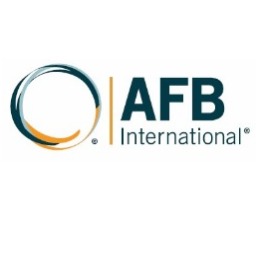
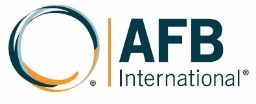
AFB International
http://afbinternational.com/
AFB International
About Company
WHAT WE DO
At AFB International, we develop and produce a full range of liquid and dry palatability enhancers. We use high-quality ingredients proven to optimize companion animal response and consumption.
Our specialty? Meeting your unique needs with custom support. Our worldwide staff of technical experts is ready to assist you with all aspects of palatability enhancement, from product development and testing to processing, logistics and more.
HOW WE WORK
Our successful customer relationships are built on clear, consistent communication—starting with really listening to understand your needs so we can respond quickly and effectively. And we keep listening. AFB scientists and technical service managers routinely travel to customer facilities to clearly understand the challenges at hand and the systems in place. Then we can recommend the best possible solutions.
OUR TEAM
AFB is dedicated to improving the health and wellness of companion animals worldwide through superior products and services. Our diverse, committed team works collaboratively to serve our clients. Get to know us—and let us know how we can help you!
HISTORY
AFB launched in 1986 and has grown to be the global science and technology leader in pet food palatability. Headquartered in St. Charles, Missouri, USA, AFB is a global company with state-of-the-art facilities in the United States, Argentina, Brazil, Mexico, the Netherlands, China and Australia. AFB is a wholly owned subsidiary of Ensign-Bickford Industries, Inc., a privately held, family-owned, professionally managed technical business that traces its roots back more than 175 years.
Products
Company News
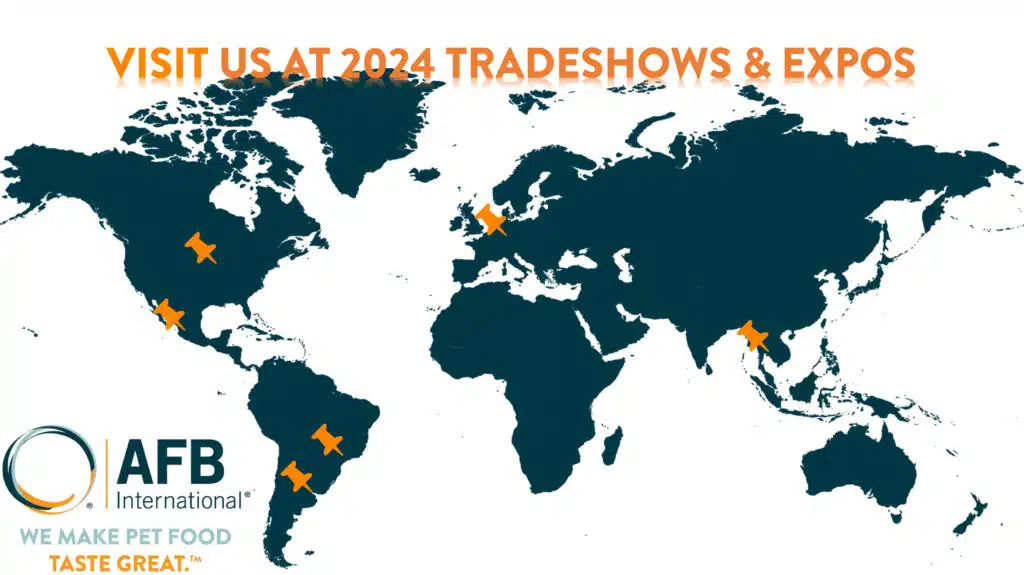 Market Information
Market Information

3+ MIN





25/04/2024
AFB is traveling all over the globe in 2024!
We are excited to announce that we will be participating in six different tradeshows and expos across the globe this year! These events are crucial for us as they enable us to connect with our customers, vendors, and other important industry contacts. Moreover, these customer-facing pet food industry events help us to showcase our latest research, global resources, and palatability products and solutions. We would love to meet you at one of these events!
Petfood Forum April 29 – May 1 in Kansas City, Missouri USA
In just 13 days, the AFB Team is traveling to Kansas City! Make sure to stop by our booth 1300, to learn how our experts, services, and products can meet your specific needs with our consultative approach.
While you are at the show, stop by the poster presentations in the Future of Pet Food Pavilion, and check out AFB's poster entitled 'Kibble Size and Its Impact on Feline Palatability' by Greg Hibbard, Senior Scientist, AFB Product Development. Greg will be there to talk about the palatability study findings – it might surprise you. Be on the lookout for the future whitepaper on Palatants+.
Interzoo May 7 – 10 in Nuremberg, Germany
The next stop will be in Nuremberg for Interzoo, which is the world's leading tradeshow for the international pet industry! Every two years, Interzoo attracts thousands from all around the world, to see a diverse range of products for pets. And we will be there in Hall 6, booth 321. Stop by to meet our Global Sales, Marketing, and R&D Teams.
A special presentation will be given at our booth – an Eat & Learn experience to connect the sensory relationships we have with certain flavors, and how they relate to our pet's enjoyment of their foods, supplements, and treats. Check out the details here.
Fenagra June 5 – 6 in São Paulo, Brazil
Then the AFB Team is off to São Paulo for one of the largest events for the Latin American pet food market – Fenagra! The event has moved from Campinas to a much larger facility for 2024. Our commercial team wants to meet with you to learn about your unique pet food needs and how palatants play a part in your products. Visit us at Booth E30, or set-up a meeting by emailing [email protected].
Foro Mascotas June 26 – 28 in Guadalajara, Mexico
The global tour continues to Mexico at the Expo Guadalajara for Foro Mascotas. Our booth G2 will be staffed with AFB's Global Marketing and Sales, so stop by to discuss your pet food product needs.
'We have been participating at Foro Mascotas for 10 years. It's a great opportunity to talk face-to-face with our customers to learn about their needs and reach out to potential customers to expand our presence in México. Over the years, Foro Mascotas has grown to 80 booths and 1,350 attendees from 15 countries.' – Ana Mendes and Jeanette Cano, AFB Mexico.
CIPAL (Congress of the Pet Food Industry in Latin America) September 25 – 26 in Puerto Madero, Argentina
Staying in Latin America, we meet again for CIPAL! This show is held every other year and is a great place for learn about new trends and technologies from the pet food industry in Latin America. Look for us at booth G1 to learn how AFB uses scientific approaches and advanced technologies to help customers maximize pet food performance.
Pet Fair South East Asia October 30 – November 1 in Bangkok, Thailand
Now we travel to the other side of the globe to exhibit for the first time at Pet Fair South East Asia! We are very excited to be a part of this event, as we have expanded our global reach into this region. Our first production facility and regional headquarters in the Asia Pacific region will be in Samut Prakan, Thailand. We are targeting to start commercial production in summer 2024. Remember to find AFB at the show to find out more information on how our new Thailand facility can help you improve the palatability of your pet food products. Or don't wait until October – contact Bas Melssen at [email protected] today.
Source: AFB
 Market Information
Market Information

2+ MIN





27/02/2024
AFB International announces new Vice President of Global Research and Development
ST. CHARLES, Missouri, Feb. 12, 2024 – AFB International, a subsidiary of Ensign-Bickford Industries, named Dr. Michael Ceddia as Vice President, Global Research & Development. Dr. Ceddia will advance AFB's scientific leadership, strategic direction, and science and technology initiatives. Together, these capabilities will further discover and develop companion animal palatability to help AFB improve customers' performance and achieve their business needs.
In addition to Science & Technology, Dr. Ceddia will also lead Global Regulatory, Quality, Project Management, and Technical Insights. Prior to AFB, Dr. Ceddia has held a variety of Executive Leadership roles within Research & Development in consumer products, pet food, nutritional, and pharmaceutical companies.
'Mike brings great leadership experience and strategic customer focus. We are excited for him to join AFB and we look forward to the advancement of innovation, science-based solutions, and technical services to better partner with our customers,' said Dale Spence, Interim President, AFB International.
'I'm excited to have the opportunity to be a part of the AFB Global R&D Team,' said Dr. Ceddia. 'I look forward to helping the company expand our new innovation and new product development while continuing to deliver a high level of technical service to our customers. I am eager to bring my knowledge and experience to the team and help drive the company's ongoing growth. With AFB International's commitment to innovation and excellence, I am confident that we will continue to achieve great success together.'
About AFB International
AFB International was founded in 1986 in St. Louis, Missouri, USA with a vision to create the best palatants and make pet food taste great. Today we are an international company with resource centers and production facilities designed to service pet food manufacturers across the world. Our portfolio of palatants are formulated to deliver optimal performance for each customer's unique needs.
About Ensign-Bickford Industries
Ensign-Bickford Industries, Inc. (EBI), founded in 1836, is a privately-owned high technology conglomerate focused in space & defense, pet food science, and biotechnology. They participate in businesses that are relevant to the future of the world and have multigenerational growth prospects.
Source: AFB International.
 Palatants
Palatants

3+ MIN





18/09/2023
Pet Fair Asia 2023 Reflections
Pet Fair Asia is considered the benchmark exhibition for pet supply companies in Asia-Pacific. The event gives significant importance to Asian markets and presents a wide coverage of supply chain and sourcing needs. In this blog, Charlie Xie, Technical Service Manager for AFB China, reports on various market trends and products while at the event Compared with traditional baked kibble, some manufacturers have redesigned the shape and introduced multiple colors. It is relatively novel among many baked kibble brands. Some brands and manufacturers have also designed chips for pets, similar to potato chips eaten by people. The main component of chips for pets is meat. The chips are very crispy, meeting the cat's texture preference. Dogs also like to eat these chips. One company was displaying freeze-dried dietary fiber meat, which increases the intake of dietary fiber in cats, helping to promote intestinal peristalsis, prevent intestinal hairballs, reduce constipation, and reduce fecal odor. Multi-colored Kibble Looking at customized meals for pets, the daily nutritional needs are customized according to the physical condition of each pet. The corresponding nutritional plan is formulated according to age, weight, gender, and other information. The daily diet could include kibble, freeze-dried, wet pet food, snacks, etc. The diet will also be customized according to customer requirements, such as plans to help fur appear healthier and more beautiful, increase intestinal health, improve oral health, and support weight loss A new concept around wet food packaging is the mini can of cat food. Cats are often fed many times a day, leading to relatively small food intake at each meal. When using a can, there may be a surplus, resulting in leftover food that is not fresh. Therefore, a brand has designed a smaller package where each mini can is 35g. This can be consumed in full every time, and part of the package is transparent so you can see the contents. Another packaging product was the Tetra Pak Packaging Wet Pet Food. Using sealed filling Tetra Recart packaging technology, low-carbon paper, environmentally friendly, recyclable materials, to promote sustainable development. This packaging uses Tetra Pak's first 9-layer packaging technology, and the shelf life can reach 24 months without adding any preservatives 35g wet cat can food and Tetra Pak Packaging for wet food Other products that were displayed were around special needs, such as a pill used to wrap medicine. Often, pets refuse to take medicine due to poor palatability. In order to solve this problem, the brand has designed a medicine-feeding product, which wraps tablets so pets successfully take medicine. This pill has very good palatability, which can cover up the bad taste. Some brands make pet nutritional supplements into the shape of coffee capsules, mixed with water, and fed to pets for pet nutrition supplements. Pills used to wrap medicine. Attending these types of shows is valuable to market research. At AFB, our palatants are specially designed to make pet foods, treats and supplements taste better. Seeing new products in person helps us support our customers using new technology. Please reach out to Charlie Xie at [email protected] if you want to learn more about AFB palatants and our services and solutions in China. We Make Pet Food Taste Great.TM by AFB International Source: All Pet Food
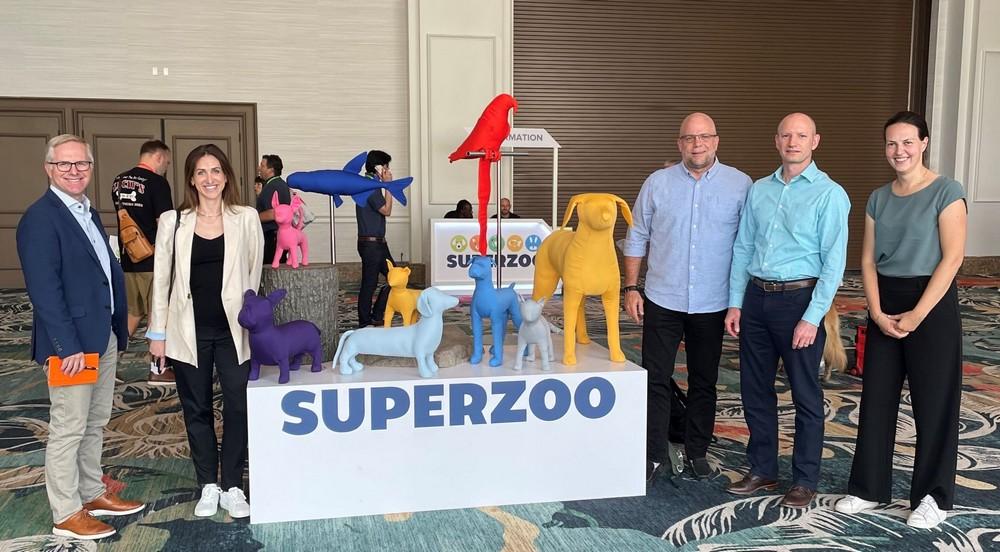 Palatants
Palatants

2+ MIN





01/09/2023
Market Trends and Highlights from SUPERZOO 2023
Dry pet food is being differentiated with broth or raw coatings and various inclusions such as jerky, baked or air dried ingredients to make the classic feeding occasion different for dogs and cats. Functional ingredients continue to dominate coming out of the pandemic with calming claims, new dental designs for mechanical cleaning action, and combinations of historical health focused needs like urinary tract health and gut health in a single item. Wet food continues to add health benefits to elevate above just a culinary experience with additions like prebiotic fiber in wet food, moisture rich for hydration claims, low phosphorous for kidney health, and probiotic inclusion in bone broth. Several established brands with strong equity extended into different feeding occasions or species looking to use that equity to grow. Specific examples are leading snacks brands into complete and balanced kibble and cat focused brands into dog offerings. CBD offerings were available but not near as many as several years ago. Sustainability can be seen in packaging and ingredient sourcing claims but is much less prevalent in NA than EU new items showcases. Insect, which was really prominent at ZOOMARK in Italy, made its way into some diet offerings for NA. UV attractants in litter and flavored bubbles for dogs were interesting items that are signs of the category moving from its focus on supply chain assurance and back to bringing out novel offerings. We are looking forward to seeing the new market trends next year! by AFB International
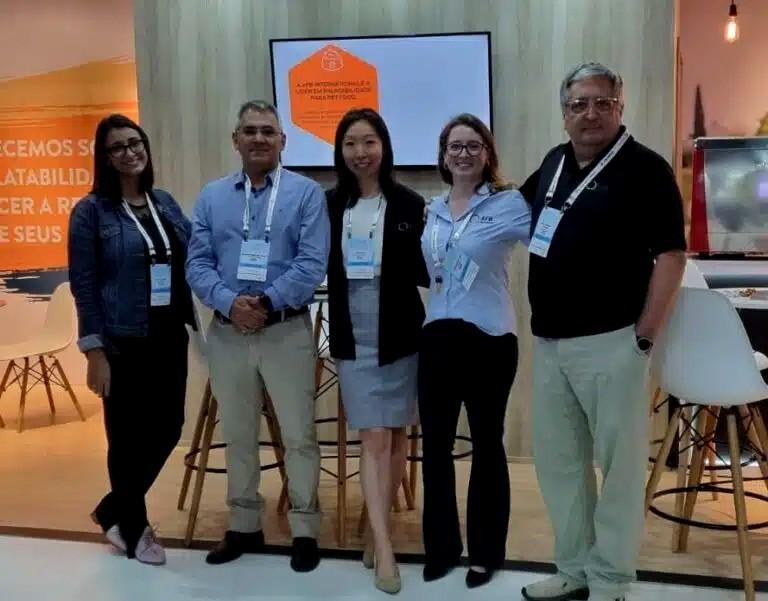 Palatants
Palatants

2+ MIN





07/07/2023
FENAGRA 2023 Reflections
This year, more than 7,000 people attended the event with goals to find new suppliers, learn about innovative products and solutions, and discuss new trends in the industry. FENAGRA promoted its Technical Congresses that discussed important issues for the sector, which had the participation of more than 1,800 professionals. The result was 2 days of tradeshow, 3 days of Congresses and 145 exhibitors Marcelo Beraldo, LATAM Director at AFB remarked about the event: 'FENAGRA 2023 has taken an unprecedented proportion in terms of size, quality of visitors and presence of important companies. It was the first post-pandemic event, which enabled a lighter and happier energy. The distancing was replaced by the desire to talk and enjoy the typical Latin warmth of this event. We had excellent contact with our customers and suppliers too.' For Leeann Bo, AFB Global Product Manager, this was her first visit to Brazil and to FENAGRA:'I was impressed by the quantity and variety of information about pet food ingredients. It was a large event with companies bringing many employees from various functions and sectors, leading to valuable conversations and connections'. Carolina Junqueira, responsible for the R&D Department of AFB Brazil, attended the 3 days of congress and said: 'Always a very good time to see friends and learn a lot from professionals, not only from Brazil but also from other countries. Every year is a rich experience!' The day before its opening, AFB participated in a pre-event organized by the company Alltech. It was a day for informative lectures and great networking opportunities in the same complex in which FENAGRA is held. The lecture 'Conditions that affect the palatability of pet food' was presented by Cesar Garrasino, Technical Manager of AFB LATAM. The lecture delved into the various factors that influence the palatability of pet food, an interesting topic for the audience, which was composed mostly of professionals responsible for formulation in pet food companies. Our booth, the information we provided there, the good service and reception of the AFB team once again made a difference in FENAGRA 2023. Our place is guaranteed at FENAGRA 2024, which will be held in an even larger event space that will now be in the capital of the state São Paulo. We value the time spent with our dear customers, suppliers and AFB colleagues from other locations. See you next year! by AFB International Source: All Pet Food
 Market Information
Market Information

5+ MIN





23/02/2023
The interview - Marcelo Beraldo Da Costa
Technology and innovation in AFB International 1) Tell us a little about your professional career. Before joining AFB, my most outstanding experience, I worked as a sales executive focused on ingredient and additives commercialization for animal and human nutrition at Danisco. My journey at AFB started in 2005 as a Sales Executive in Brazil. At that time, we were still starting the company's expansion in Latin America. I worked focusing on the development of all areas necessary for the construction and operation of the facilities in Jaguaríuna - SP. In 2009, I was promoted to Brazil Director. In 2019, in the same position, I assumed responsibility for the operation in Mexico. Now, in 2022, I am very grateful to have been promoted to LATAM Director. I graduated from the State University of Campinas (UNICAMP) with a degree in Food Engineering and a Master's Degree in Business Administration and Marketing from ESPM. 2) Can you give us a small presentation of the company and its mission in the market? AFB International was founded in 1986 in St. Louis, Missouri, USA. It is a subsidiary of Ensign-Bickford Industries, a private company for over 185 years focused on space and defense, pet food science, and biotechnology. Our vision from the beginning was to create the best flavor palatants and make pet food taste amazing. Since then, AFB has partnered with pet food manufacturers to make dog and cat food, treats, and supplements with great flavors. This way, we ensure that pets receive the vital nutrition they need. We further enhance this partnership through research expertise, technical support, and outstanding customer service. 3) What are your main challenges as the new director of the company? What is your focus for 2023? What do you think is essential to focus your efforts on? Now, as LATAM Director, my team and I are challenged to drive sales growth in the region, increase profitability and develop product requirements that meet the ever-changing needs of our emerging market. 4) What is the importance of working on the palatability of pet food products? Even very nutritious food is worthless if a cat or dog doesn't eat it. That's where the right palatability agent can make a difference. Palatabilizers are made with ingredients specially developed to improve food intake. They are created to stimulate one or more of a pet's sensory capacities – olfactory, kinesthetic, taste, and texture. 5) What role do flavorings play in achieving good palatability? Palatabilizers are essential to achieve good palatability, but it is far from being the only influencing factor. There are crucial factors for good food performance: product formulation, quality of ingredients, production process, etc. These factors, together with the right palatability agent for the pet food company's needs, are what will bring performance. That is why it is so important to consult the entire process that AFB provides to its clients because we think of palatability with a holistic view. 6) What flavoring technologies/proposals are currently growing? We noticed great growth in new powder products with very high performance for cats. On the flip side, we've also seen a growing need for cost-effective palatability as manufacturers grapple with last year's cost increases while, at the same time, receiving pressure from their customers about the economy and inflation. So it's a contradiction in needs right now. 7) In relation to the trends in the industry, such as the high pet humanization or changes in food, what changes have you made in your production process, technologies, or products? Today, there is more focus on health and wellness. There is a desire to see more natural ingredients. That's a lot like human eating tendencies, and that's no coincidence. Human tendencies often end up migrating to pet food a little later. For AFB, we see it as a responsibility to ensure that pets enjoy the taste of their meals, while also respecting the trends that our customers want to claim in their diets. Vegetarian dog food requires a vegetarian flavoring agent. A greater interest in wet cat food calls for palatabilizers that work well in this format. The inclusion of a nutritional ingredient may require extra palatability to mask its taste. Therefore, in this scenario of humanization, our innovation must focus on two things at the same time: meeting our customers' palatability needs and their brand philosophy. As the pet food market grows and changes, AFB must constantly innovate to meet the needs of pet food companies. 8) What policies has AFB adopted in terms of the circular economy and sustainability? AFB is committed to sustainable development. We always aim for a balance between protecting the environment and economic growth. We ensure the sustainability of our projects, developments, and products throughout their life cycle, considering economic, environmental, and social impacts. In addition, we train our workers on issues related to the correct disposal of all waste generated in the manufacturing process, also covering suppliers, competent bodies, and representative entities. The treatment of this waste is essential, and we correctly send it to treatment stations by environmental legislation. AFB also achieved a 'Silver' rating with ECOVADIS, a third-party sustainability auditor. This high score reflects the quality of our company's sustainability management. We also completed the self-assessment via SDG Action Manager against the Ten Principles of the United Nations Global Compact and the Sustainable Development Goals (SDGs). The SDGs work as a guideline to improve people's and the planet's conditions by 2030. AFB is committed to achieving this. Another important action is being a member of the Pet Sustainability Coalition for two years, a global not-for-profit organization working to help the pet food industry towards a more sustainable future. 9) What do you consider to be the main current challenges for industry growth? Despite the growth, the pet food market has also been challenging over the past two years. The entire pet food industry has focused on securing supply. The challenges arising from global supply chain issues and material shortages make our industry stronger and improve our resilience, but I believe they also caused pet food innovation to temporarily stall. Fortunately, our industry is coming out of it now, and stronger than ever to continue the transformation of this landscape. Source: All Pet Food Magazine
 Palatants
Palatants

1+ MIN





06/01/2023
AFB website – User experience improved!
A primary purpose of AFB's website is to share important information about pet food and palatants with pet professionals. To improve the visitor experience, AFB's digital website platform has recently been enhanced to be more user-friendly, especially when looking for specific information. Visitors can find various technical downloads on palatability-related topics. The papers are designed to be informative for all visitors, including those who are new to the industry as well as those with more experience. AFB's regularly updated blog reports include technical white papers, global tradeshow presentation announcements, and AFB corporate news. And now you can access both our technical downloads and read our blogs on our main website by doing a keyword search. We invite you to check out all the pages on the AFB website – there is more content and numerous improvements not mentioned here for visitors to enjoy. If you have questions or suggestions for digital content, please email AFB at [email protected]. ABOUT AFB INTERNATIONAL by AFB International Source: All Pet Food
 Palatants
Palatants

3+ MIN





24/10/2022
Marcelo Beraldo Costa – Appointed as LATAM Director
When I started 17 years ago, I never would have imagined the growth of AFB in Latin America, let alone the pet food market growth this region has experienced. My journey with AFB has included the growth and expansion of facilities in Argentina, Brazil, and Mexico. So, in August of this year when I was approached to be the LATAM Director, it was with gratitude, joy, and reflection that I accepted this role. The political and economic issues of our region make the landscape even more challenging, but the access to raw materials helps balance things. At the end of the day, pet food is an exciting place to be right now. We continue to see changes in what pet parents want in their pets' food. Today, there is more focus on health and wellness, and it is our responsibility to ensure that pets enjoy the taste of their meals, but we also respect the trends our customers want to claim on their diets. Therefore, our innovation must focus on two things at the same time: meeting the palatability needs of our customers and honoring their brand philosophy. As the pet food market grows and changes, AFB must constantly innovate to meet the needs of pet food companies. For AFB, having centralized leadership for the Latin American region is of great importance. This is how the advances of this region will be enhanced, through coordinated actions. That means actions with the same direction and intensity. A global mindset helps us experience regional growth because we can adjust to changing industry and economic challenges. In a recent magazine interview, I talked about some of the latest pet food industry challenges around supply assurance. 'Between global supply chain problems and material shortages, pet food procurement and technical teams have been a very exciting experience. All these challenges make our industry stronger and improve our resilience, but we believe it's also caused a temporary dip in pet food innovation. Fortunately, our industry is coming out of it now, stronger than ever and excited to get back to the business of pet food innovation.' Speaking of local actions, I cannot forget to mention the successful return of in-person tradeshows in the region. In May, we had FENAGRA in Brazil, where we had the opportunity to present 'Palatability in Pet Food'. In June we exhibited at Foro de Mascotas in Mexico, where we met with many of our customers and industry professionals. Finally, in September, we exhibited at CIPAL in Argentina, where we also had a presentation on the topic of measuring food enjoyment in cats beyond consumption. All these events create great business opportunities, closer ties with our customers and an understanding of market challenges. It is with enthusiasm and optimism that I visualize our challenges to further expand AFB in Latin America and as a consequence, expand AFB globally. Feel free to reach out to discuss how AFB collaborates with our customers to develop tailored pet food palatants to meet specific needs. You can reach me at [email protected]. By: Marcelo Beraldo da Costa Source: All Pet Food
 Palatants
Palatants

1+ MIN





22/09/2022
Expanding our North American Footprint
Due to this industry growth, AFB International is excited to announce in a recent news release our third North American manufacturing site in Columbus, Georgia – investing more than $79 million in the new facility and creating more than 100 new jobs in the next five years. The construction of a new plant demonstrates the strength of our industry, our customers, and our company. Andy Zenor, Senior Director of North America said 'We received a lot of feedback from customers … all of it positive. Customers were really excited to see this investment by AFB to support their growing demand. It really shows our commitment to the industry.' Columbus, Georgia is a thriving community with rich backgrounds in food manufacturing and science and technology. The area is home to several technical colleges and post-educational establishments, along with Fort Benning, to provide a strong, diverse talent pool. 'AFB is excited to become part of the Columbus community. We are proud of the work we've done since 1986 to make pet food taste great, and pleased to continue our growth with the talented workforce in the Columbus region,' said Jared Lozo, President of AFB. Even though operations at the Columbus plant are not expected to fully begin until 2024, AFB's Human Resources team is starting the recruiting process early. A few positions will be hired to assist with the facility construction starting in 2023. Check out the Careers page and apply today. by AFB International All Pet Food
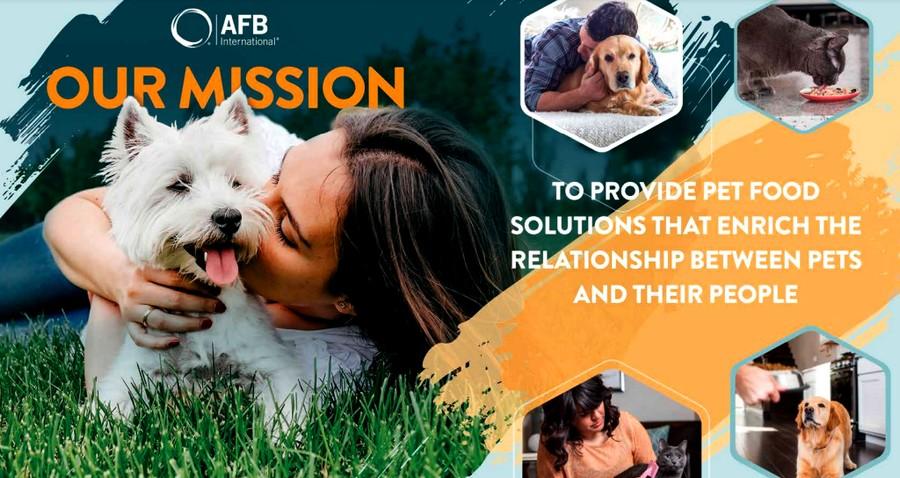 Palatants
Palatants

3+ MIN





05/08/2022
AFB International to Create More than 100 New Jobs in Columbus
"Since taking office, I have been laser-focused on bringing opportunities to every corner of our state, and I am excited that a great company like AFB is answering that call and investing in the Columbus community," said Governor Kemp. "Near Fort Benning, AFB will find a highly capable workforce ready to meet their needs. I look forward to seeing this project's impact, including its impact on the many military and veteran residents who could fill these quality positions." AFB develops, manufactures, and sells palatant ingredients to pet food companies worldwide. Palatants are ingredients that make pet foods, treats, and supplements taste great, ensuring pets enjoy their feeding occasions and get the vital nutrients they need. "AFB is excited to become part of the Columbus community," said AFB International President Jared Lozo. "We are proud of the work we've done since 1986 to make pet food taste great, and pleased to continue our growth with the talented workforce in the Columbus region. For AFB, this plant is key to fulfilling our commitment to be the most responsive and reliable supplier of pet food palatant solutions in the world." AFB's new facility will be located at the Muscogee Technology Park, a Georgia Ready for Accelerated Development (GRAD) Certified site in Muscogee County. Operations are expected to begin in 2024. The company will be hiring for management, engineering, operations, and administrative support positions. Interested individuals can learn more at //afbinternational.com/careers. "As a global science and technology leader, AFB will be a great partner for our community," said Heath Schondelmayer, Chairman of the Development Authority of Columbus. "We are extremely excited about this announcement today because growing Columbus and creating jobs for this community is our top priority. Our local economic development team and our State of Georgia partners came together to turn this opportunity into a win, and we're confident that our top-notch quality of life and talented workforce will ultimately set up AFB to achieve business success for many years to come." Project Manager John Soper represented the Georgia Department of Economic Development's (GDEcD) Global Commerce team on this competitive project in partnership with the Greater Columbus Chamber of Commerce, Georgia Power, and Georgia Quick Start. For more than 50 years, Quick Start, provided through the Technical College System of Georgia, has helped assess workers, train new employees on unique processes on projects, and develop customized job-specific training using the most current techniques and media. "AFB perfectly aligns with Georgia's spirit of collaboration and innovation, and we are excited for the jobs and opportunities their new facility will create for local communities," said GDEcD Commissioner Pat Wilson. "Urgency of customer demand has been a key challenge for many companies in the last year. We are grateful for our partners in Columbus for investing in speed-to-market solutions like the GRAD program, and we look forward to AFB's future success in Georgia!" In order to earn a GRAD program certification, a property must undergo due diligence and complete specific certification requirements before a prospective business visit. Completing the GRAD certification program with GDEcD is a proactive way for both community planners and landowners to help catalyze economic growth and industrial development for the regions they serve. Through this program, Georgia has more than 60 industrial certified sites ready for fast-track industrial projects. About Applied Food Biotechnology For over 30 years, AFB International has been providing pet food solutions that enrich the lives of pets and their people. The company's palatants are specially designed to make pet foods, treats and supplements taste better, ensuring pets receive the vital nutrients they need. Headquartered in St. Charles, Missouri, USA, AFB has offices and production facilities strategically positioned around the globe in the United States, Argentina, Brazil, Mexico, the Netherlands, China, and Australia. AFB is a wholly owned subsidiary of Ensign-Bickford Industries, Inc., a privately-held, family-owned, professionally managed technical business that traces its roots back more than 175 years Source: AFB International by All Pet Food
 Market Information
Market Information

3+ MIN





02/05/2022
2022 – Year of the In-Person Tradeshows!
Petfood Forum May 2 – 4, 2022 in Kansas City, MO Visit Booth #1300 to learn about our consultative approach that helps us identify how our experts, services and products can help meet your specific needs. In addition, Michelle Sandau, Ph.D., AFB Director of Research and Development will discuss transforming subjective responses to a measured response in her presentation 'Specialty pet food formulations: Bridging the gap between emotions and science' on Tuesday, May 3rd. Fenagra Brazil Pet Food Expo May 11 – 12, 2022 in Campinas, Brazil Join us in Brazil at booth #B30 for one of the largest events for the Latin American pet food market. Bruna Leao, AFB's Marketing Analyst, is excited to attend her first pet food expo. Interzoo May 24 – 27, 2022 in Nuremberg, Germany Also in May, AFB is eager to see our customers face-to-face again at Interzoo – the world's leading trade show for the international pet food industry. Visit booth 6-321 in Hall 6 for an opportunity to meet our global Sales, Marketing and R&D teams and learn about our low phosphorus and probiotic palatants. 'We are so excited to see customers in person again at Interzoo! This trade fair provides a fantastic opportunity to share our new products, learn about customer needs, and offer our insights as the leader in pet food palatability. Stop by our booth in Hall 6 to discuss how AFB can help meet your specific palatant needs. I look forward to seeing you in Germany!' – Sebastian Valencia, Regional Product Manager, AFB Europe Foro Mascotas June 16 – 17, 2022 in Guadalajara, Mexico The global tour continues at Foro Mascotas in June. Meet our AFB team at booth #60 – 61 to learn how we deliver palatability, partnership and performance to our customers. 'Foro Mascotas offers a unique opportunity for us to interact with our customers and share our knowledge as leaders in pet food palatability. I invite you to stop by our so that together we can analyze how AFB can help meet the specific needs of your company. I hope to see you soon at the forum.' – Jeanette Cano, Sales Manager, AFB Mexico CIPAL September 28-29, 2022 in Puerto Madero, Argentina Visit booth #G1 to learn how AFB uses scientific approaches and advanced technologies to help customers maximize pet food performance at the Latin America Pet Food Industry Congress CIPAL in September. 'As in previous years, next September AFB International will participate with a stand at CIPAL 2022 (Latin America Pet food Industry Congress ), to be held at the Catholic University in Buenos Aires, Argentina. CIPAL has been positioned as one of the most important pet food congresses in Latin America. This year an increase of 40% in the exhibition areas and double the number of technical conferences is scheduled. In previous years we have been visited by more than 600 participants including pet food manufacturers, suppliers of equipment and ingredients and technicians related to the area. AFB will be present with its team of technical and commercial professionals to provide information on dog and cat food flavoring products and programs.' – Cesar Garrasino, Technical Service, AFB Argentina. by AFB International Source: All Pet Food
 Palatants
Palatants

2+ MIN





20/04/2022
Our Coworkers have Fur and Tails !! Welcome to AFB's Dog- Fiendly Worplace
'In 2017 AFB's global headquarters instituted a dog-friendly workplace, and the benefits have far exceeded expectations. Having dogs in the office complements AFB's positive culture and helps create a happier, healthier workplace,' says Morgan Clarkson, Global HR Director. And employees agree. 'I believe having Sasha here in the office with me helps lower my stress levels. When I'm having a hectic day of meetings and calls, taking her out for a short walk helps me take a mental break and re-energize. And I get the added benefit of a little exercise,' says Lynn Cruz, Quality Assurance. Dogs in the office also encourages a more collaborative culture. Many relationships started simply because one colleague stopped to say hi and pet another employee's dog. 'Sometimes I think my coworkers like seeing Phillip more than me,' jokes Greg Hibbard, Product Manager. Many more companies are also learning the benefits of a pet-friendly workplace. 'A study conducted by Nationwide, in partnership with the Human Animal Bond Research Institute (HABRI), revealed that 90 percent of employees in pet friendly workplaces feel highly connected to their company's mission; fully engaged with their work; and willing to recommend their employer to others. In contrast, less than 65 percent of employees in non-pet friendly workplaces made the same claims. Employees in pet friendly workplaces were also more likely to stay with their company in the future.' Additionally, a dog-friendly work environment helps attract talent. 'I was very excited when I learned AFB was a dog-friendly workplace and that really drew me to the company. Seeing dogs at work every day definitely makes work more fun! We just got a new puppy and I'm looking forward to when she's old enough to come to work with me,' says Emma Koziel, Customer Engagement Scientist. If you are looking for a company where dogs are welcome in the office, take a look at AFB International. Check out our open positions. A career at AFB offers exciting opportunities for development and growth while surrounded by our furry friends. by AFB International All Pet food
 Palatants
Palatants

3+ MIN





01/02/2022
Cat eating enjoyment informs preference of food components
Cat pet parents, for example, note their cats are inclined to lick the gravy and refuse the chunks in chunks and gravy meals, which suggests to pet parents the chunks are less enjoyable. Research at AFB International includes creative methods to measure palatability preference in cats and dogs for various food types, including those with multiple shapes and textures. Eating enjoyment is a dimension of palatability and can be interpreted by the pet's interaction with the food, and/or by what pet parents perceive as they watch their pet eat. In a recent study, we measured multiple responses during cats' interactions with food and summarized them as Initial Attraction (First Approached, First Tasted, Duration of First Eating Bout) and Sustained Interest (Consumption, Uptake, Food Focus) to evaluate how individual food components of a chunks and gravy meal influence eating enjoyment. We found that cats indeed preferred gravy to other components of the meal, which supports many pet parent perceptions. Additionally, chunks were avoided in favor of anything with gravy, and when chunks alone were offered versus the whole chunks and gravy meal cats primarily licked the gravy from the chunks and gravy meal. STUDY 1 Hypotheses: a) gravy alone would be preferred over chunks and gravy and over chunks alone, and b) chunks and gravy would be preferred over chunks alone. Supported. Figure 1. Components of a highly palatable commercial wet food presented in two-bowl trials. Table 1. Results for the most enjoyed food component by cats in 2-bowl trials. Anything with gravy was preferred by cats. Based on the outcome of this study, we again measured cats' interactions with foods (i.e., Initial Attraction and Sustained Interest) evaluating whether they prefer to lick rather than chew their meals. To do this we blended chunks and gravy meals in a food processor to achieve a homogenous, lick-able whole meal and offered it versus the original form of food. Specific responses within Sustained Interest indicated that the blended form of the meal was consumed more than the original form, likely because it was more efficient to consume. However, collectively, the additional measures suggested that cats enjoyed the original forms more than the blended forms. STUDY 2 Hypothesis: Cats prefer to lick rather than chew their chunks and gravy meals. Not supported. Figure 2. Blended and original (unblended) forms of four commercial products presented in two-bowl trials. Table 2. Results for Eating Enjoyment in cats of blended and original forms of wet foods in two-bowl trials. In general, original forms were enjoyed more than blended forms. Measures of eating enjoyment offer additional insight to the feeding experience of cats and dogs by describing how they are eating not just how much they eat. Here, Initial Attraction and Sustained Interest demonstrated that cats enjoy a specific component of a whole meal over other components. Unexpectedly these enjoyment measures also revealed more about our cats' eating experience: licking, although efficient, is not the primary driver of enjoyment of a wet meal. Finally, we continuously seek to gain a better understanding of eating enjoyment as a dimension of palatability that helps to guide product improvements that ultimately provide a more satisfying eating experience for cats and their people. These methods can be applied to investigate palatability of many food matrices, such as heterogenous wet and dry foods, as well as their corresponding size, form, and texture. By: AFB International - Research and Development
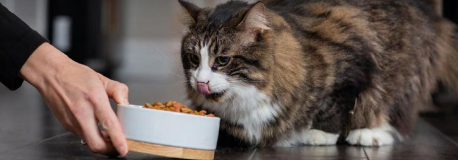 Palatants
Palatants

3+ MIN





18/08/2021
Applying pet food palatants
Liquid palatants Liquid palatants are delivered in bulk tankers or in an intermediate bulk container (IBC). Tankers are advised when large quantities are used; otherwise IBCs are recommended. IBC use also depends on the factory layout or use of multiple palatants. Commonly stored on site in agitated storage tanks, liquid palatants perform best when maintained between 70°F and 95°F. Due to natural physical characteristics, liquid products may exhibit some separation. The separation will not have an effect on palatability and can be controlled by agitation just before use. When a tank is used to store the bulk delivery, the tank must contain an agitator to blend the product before use to achieve homogeneity. Mix the product just enough to keep it moving and to avoid inclusion of air. Too much air inclusion can cause foam which could affect the product quality. Blending the product in the tank will also prevent potential formation of a water layer on top created by condensation when temperature differences occur. A watery layer will change the pH and preservative concentration causing a potential risk for mold and other bacteria to grow on top of the product. An agitator in the tank will also help prevent this watery layer. To apply liquid palatants, suitable coating systems include drum coaters, batch coaters, screw coaters, augers or spinning disks. Set up the system to add the fat first, then the palatant. (Figure 1). Once complete, blend kibbles properly to be sure a homogeneous coating is reached and to allow the fat and palatant to fully absorb. Blending time depends on factory layout, required throughput and coater type. For optimal kibble performance when applying a liquid palatant: Keep air out of the palatant application process. Include baffles in mixing tanks and eliminate free-fall product return on recycle systems to help prevent fat from oxidizing, which can decrease palatability performance. Avoid over-application. Carefully synchronize the kibble feed rate and the palatant application rate to prevent excessive application, which could increase moisture and lead to mold growth if not properly monitored during production. Retention time. After the fat and digest dosing, a certain retention time allows flavors and moisture to distribute homogeneously over the kibbles. Choose the correct spray nozzle for your application. Two recommended nozzle types are flat spray pattern and full cone spray pattern. The right nozzle choice depends on coater type and setup. The size, or opening, of the nozzle depends on the amount of the liquid you want to apply. The nozzle should form very small droplets, not a mist or a pouring liquid. Prevent overspray. Aim spray nozzles to avoid excessive buildup on the augur or coating drum, which could compromise pet food quality over time as fines will stick to the liquid creating lumps composed of materials from multiple batches. Carefully position palatant and fat spray nozzles. Ensure no more than 10% overlap in palatant spray patterns to support consistent performance. Also strive for no overlap between the fat and palatant application. Dry palatants Pet food palatants are packaged in standard dry bags or bulk bags. palatants are added after the fat or liquid palatant application. (Figure 2) The fat or liquid palatant acts as a tacking agent and is an integral part of the total palatability solution. Dry palatants are fed into the coating system using a loss-in-weight or a volumetric feeder. Pulse dosing should be avoided to obtain a homogeneous spreading of the powder. The hopper of the feeder should contain an agitator to avoid bridging of the powder which would disrupt an even powder supply. (Figure 3: Palatant Application Process) For optimal kibble performance when applying a dry palatant: Coat kibbles evenly. Discharge kibble onto a plate or splitter to facilitate continuous flow of the desired kibble quantity which will secure accurate palatant dosing. Avoid impeded flow. The small size of the feeders often requires the use of vibrators or flow assist devices. Avoid palatant buildup on the coating system. Maintain the desired kibble level before applying dry palatant to avoid such buildup. Source: AFB Intenational
 Market Information
Market Information

3+ MIN





04/08/2021
AFB appoints Brooke Eiler as Vice President, Global Marketing
First, people love their pets. And those pets enjoy a variety of pet foods made by dedicated, high quality, highly-regulated pet food companies. This is actually not so different from elsewhere in the world. I am proud to be part of the pet world, and my time working with pet food companies in this region has only increased my respect for our industry. Second, in the words of a Spanish customer, my English has improved. This might seem strange at first since my native language is English; non-native English speakers will understand. I've learned to appreciate the diversity in native languages across the region. This appreciation has led me to be more sensitive to body language, more thoughtful about suitable vocabulary, and more attentive to understanding. In a world that is increasingly diverse and global, excellent communication is a critical part of personal and professional success. Many thanks to my Spanish friend for pointing it out! Third, Europe is a challenging and exciting market for pet food companies. According to the World Atlas, there are forty-four countries in Europe. That's forty-four different cultures, histories, pet trends, retailers, customs, and laws as well as lots of different languages. And that doesn't include the highly diverse Middle Eastern and African regions also served by AFB and pet food companies. The abundance of diversity is one of the things that makes this region so incredible yet so complex. One look at a pet food label with five languages gives a sense of the complexity – especially when you know the same brand probably has multiple versions with additional, different languages. The companies who are successful here have the skills and expertise to be successful anywhere in the world. As I depart the Netherlands, I am especially pleased to welcome Andries Smit to the AFB European team. Andries' over two decades of global experience in specialty B2B ingredients will be a huge benefit for AFB and our customers. A constant drive to add value to customer's products and brands has been a red thread throughout his career. He will continue to lead the commercial team in delivering the best palatant solutions through partnership with customers and a continued focus on industry-leading customer satisfaction. To meet Andries, contact your AFB account manager, or reach out to him. Fortunately, in my new role as Vice President, Global Marketing, all of the relationships and insights built in my years at AFB will continue to bear fruit. Our Global Marketing team has a two-fold mission of building customer value and building company value, and this only happens with deep understanding of the needs of the industry, its companies, and its customers. So, my European friends, this is not goodbye… this is more of a 'see you soon'. Let's not become strangers! If you have ideas, want to network, or would like to share a cup of coffee, you can continue to reach me. By: AFB International
 Palatants
Palatants

2+ MIN





30/06/2021
Palatability with less phosphorus is possible
Essential phosphorus Phosphorus is an essential nutrient for cats. It is a key component of skeletal health and is involved in several metabolic processes. This mineral is naturally occurring (organic) in many of the ingredients used in commercial pet food. Organic phosphorus is found in protein-rich sources like meat, fish or bone meal, and in plant ingredients like wheat or bran. Inorganic phosphorus is added to the diet to balance mineral content or for other technical properties such as pH stabilisation, processing, or palatability. Safe upper limit? There is currently no established safe upper limit for dietary phosphorus. However, research has demonstrated that excess inorganic phosphorus can have a harmful effect on cats with existing renal disease. Recent studies suggest there may also be a link between high dietary inorganic phosphorus and renal function in healthy cats. In response, the European Pet Food Industry Federation (FEDIAF) has added a specific footnote regarding recommended nutrient levels for cats as it pertains to inorganic phosphorus: High intake of inorganic phosphorus compounds (such as NaH2 PO4) may affect indicators of renal function in cats (Alexander et al. 2019, Dobenecker et al. 2018a, Dobenecker et al. 2018b). More research is needed to clarify potential risk. New palatants The Pet Food Industry recognises that palatants are a main contributor of inorganic phosphorus in finished cat food. It is also acknowledged that it is quite a challenge to lower the level of phosphorus while maintaining the palatability required to ensure cats receive the vital nutrients they need. Scientists at AFB succeeded in developing new feline palatant solutions to address the challenge. These products contain lower levels of inorganic phosphorus while also maintaining or increasing palatability. In addition to the health benefit of contributing less inorganic phosphorus, these palatants can provide other advantages to pet food manufacturers with formula flexibility that enables potential cost savings. By: AFB International
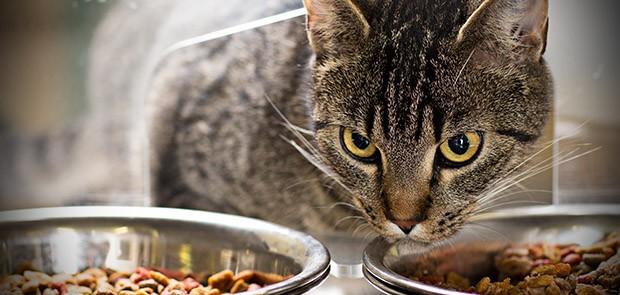 Palatants
Palatants

3+ MIN





10/06/2021
Beyond Consumpyion - Measuring Cat's Food Enjoyment - Research and development AFB Intenational
Typical cat food palatability assessments consist of either: Preference trials: A two-bowl trial measuring consumption when given two options. The first bowl approached, first food tasted, amount consumed, and intake ratio are used to measure preference. Acceptance trials: A one-bowl trial that generally only measures the amount consumed. While these common trial methods are valuable in assessing preference and palatability, AFB International sought to determine other ways to evaluate cat food enjoyment, as well as develop methods that would be representative of what pet parents might experience at home. Trials conducted at AFB's Palatability Assessment Resource Center (PARC) found behavior methods can augment consumption data in preference and acceptance trials to provide additional insight to a cat's feeding experience. FOOD FOCUS - Nose in BowlSM (NIB) Trial Purpose: Measure cat's interest in food and help distinguish products with similar consumption Approach: Sixteen individual cats were fed four diets over four days in acceptance trials. Video- recordings aided in using food focus to distinguish preference between diets. Food focus, defined as the time spent eating, sniffing, and engaged with their food, was quantified versus time distracted. High food focus indicated palatable food and high enjoyment. Low food focus indicated the cat was distracted while eating, which could be related to palatability. Results: As shown in Chart 1, three diets had similar consumption, but diet A had significantly higher food focus. This indicates diet A was enjoyed more than C or D. And while diet B also had high focus, the proportion of food consumed was much less than the other diets. This could indicate the cat had difficulty biting or chewing the food, and may provide insight to pet food manufacturers on where to focus product improvements. WORK EFFORT - Puzzle Trials Purpose: Measure effort cats are willing to exert for treats, as well as mimic the effort cats are expected to 'perform' for treats at home. Approach: Puzzles presented obstacles between the cat and treats. Sixteen individual cats were offered two puzzles, each with a different commercialized cat treat dispersed throughout. As the cat consumed treats from one puzzle (Treat A), it became more difficult to find and reach the remainder of Treat A, but easier to find and reach Treat B in the other puzzle. The trial completed when each cat consumed 50% of total treats offered. Treats consumed (Treat A vs. Treat B) were quantified and indicated preference. Results: This measure aids in distinguishing differences between cat treats. Chart 2 illustrates that despite the cats needing to exert less effort to obtain Treat B, the cats persisted in choosing Treat A - the more palatable option. INTERACTION - Hand-Feeding Trials Purpose: Evaluate a food's ability to entice cats into the lap of their pet parent and prolong interaction after the food is gone. Approach: Sixteen individual cats were offered, by hand, commercialized paste treats encouraging close contact during feeding. Development of enticement and interaction scales intends to interpret treat preference and enjoyment in future trials. Preliminary Results: All treats enticed most cats to the greatest behavior measure – sitting in a technician's lap (Chart 3). The interaction scale (Chart 4) suggested the more a cat enjoyed the treat, the longer he allowed interaction (petting), even when no more food was offered. Brand C Tuna influenced cats to interact the longest, suggesting the interaction scale can differentiate products. Conclusions Behavior trials with kibble, dry treats and paste treats demonstrated additional ways to assess palatability and food enjoyment beyond consumption to describe an additional dimension of the cat's feeding experience. Behavior and enjoyment data can augment consumption data to help pet food manufacturers develop products that provide more interaction between pet parents and their cats, and the assurance they are offering their cat a food they enjoy, not just eat. To learn more about Applied Behavior Research, contact Susan Jojola. By: AFB Intenational
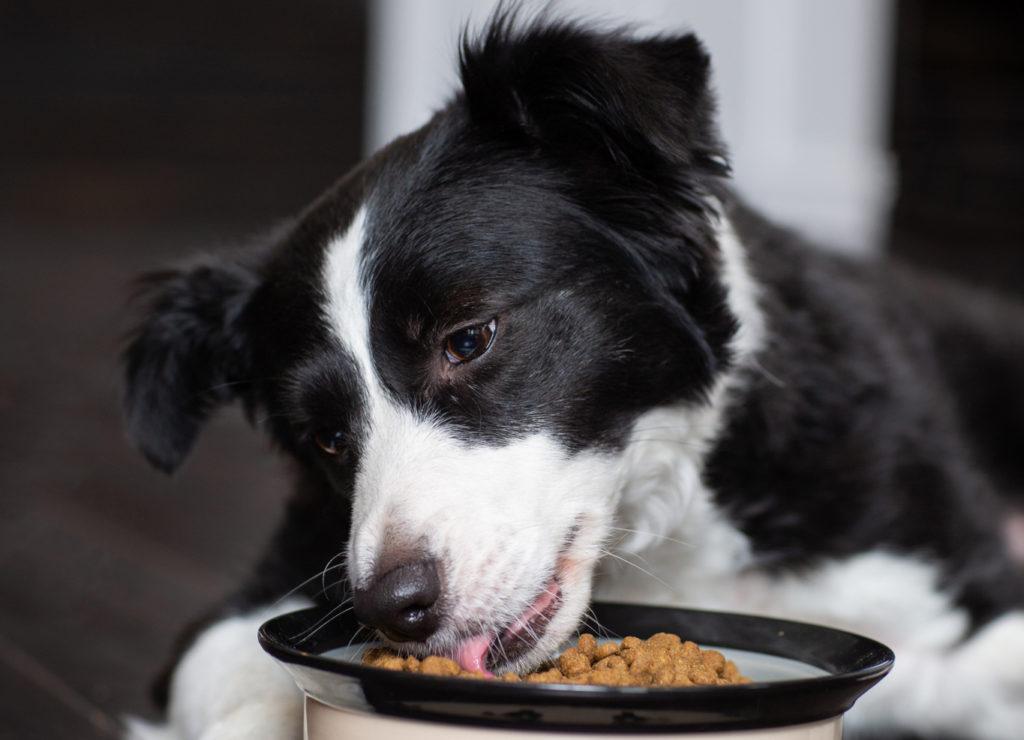 Dogs
Dogs

3+ MIN





30/11/2020
Pet Parent perceptions of labored swallows in dogs
APPLIED BEHAVIOR RESEARCH, AFB INTERNATIONAL More and more, pet parents want to know their dog is enjoying a meal in addition to simply eating it. If a meal is perceived as enjoyable, then there is a greater likelihood of a repurchase. We presented videos with different levels of dog feeding enjoyment (i.e., % Nose in BowlSM) to pet parents. However, when pet parents judge 'enjoyment', they could have different expectations for how their pet should respond. An example of a difference in expectations is labored swallows, or chin thrusts, during eating. This study took a closer look at whether labored swallows are likely to be perceived as positive or negative by pet parents when describing their dog's enjoyment of a meal. SURVEY DESIGN Paired video surveys were conducted at AFB International in Missouri, USA. Fifty-five survey responses were collected from dog pet parents. Each survey participant watched two videos (A and B) of a dog eating a meal. Videos A and B differed in the level of % Nose in Bowl, which is an objective measure of feeding enjoyment (i.e., the proportion of time focused on the food). Three categories of paired videos A and B represented three levels of difference in % Nose in Bowl: low 3%, medium 6% and high 12%. Category 1: (3% Nose in Bowl difference)= Both videos A and B contained labored swallows. Video A had double the number of examples than B. Category 2: (6% Nose in Bowl difference)= Both videos contained labored swallows, but A had more than double the number of examples than B. Category 3: (12% Nose in Bowl difference)= Video A contained labored swallows while video B had zero examples. Participants were randomly assigned to video categories and were not aware that labored swallows were the focus of the study. After each viewing, participants were asked in which video (A or B) the dog enjoyed the food more. Our hypothesis was that pet parents would perceive videos containing more labored swallows as the less enjoyed meal. RESULTS For Category 1 where labored swallows occurred in both videos and % Nose in Bowl difference was low, unexpectedly, the pet parent was slightly more likely to assign labored swallows as a positive behavior (Figure 2). In Category 2 labored swallows were present in both videos with Video A having more than double the number of video B and medium difference in % Nose in Bowl. As expected, participants rated video B with less labored swallows as more enjoyable. In Category 3 labored swallows were only present in Video A and videos had greatest difference in % Nose in Bowl. As expected, Video B with no labored swallows was associated with more enjoyment. CONCLUSIONS Prior to this study there wasn't a clear understanding of how labored swallows could be perceived as part of dog feeding enjoyment. Despite a small portion of participants who associated labored swallows as a positive response, most of our participants perceived labored swallows in a negative context, particularly when % Nose in Bowl differences were 6% or greater (Categories 2 and 3). Enjoyment was more difficult for pet parents to distinguish when % Nose in Bowl was similar in videos A and B even when labored swallows occurred twice as often (Category 1). The knowledge gained from this closer look into labored swallows will guide behavioral interpretation of future feeding trials that this response is generally perceived by pet parents as a negative action. By: AFB International
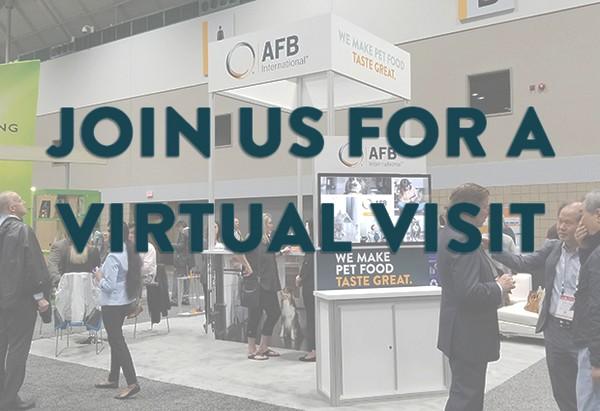 Palatants
Palatants

1+ MIN





21/07/2020
Join AFB International at PetFood Forum Connect 2020
AFB International is excited to be part of the Petfood Forum CONNECT virtual event to be held September 9 – 10 and September 15 – 17. This new digital experience offers a unique way to interact, learn and share with key members of the pet food industry. You will be able to visit our digital showroom for premium content, downloadable links to educational materials, and meet with our Sales teams for a 1:1 conversation. We look forward to 'connecting' with you! by All Extruded
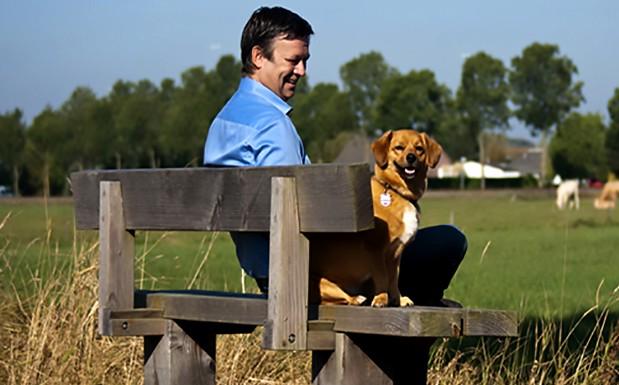 Palatants
Palatants

4+ MIN





18/04/2020
Learning to Navigate a New Normal
As I look out my office window, it almost looks normal. Trucks are coming and going, and employees are busy. But if I look closer, it's easy to see signs that these are not normal times.
Employees and truck drivers are social distancing, most offices are unoccupied, and there is little traffic on the roads. In these times, AFB is incredibly fortunate to be able to continue our operations, as our part of the pet food supply chain has been deemed an essential business by the government. It is great to be part of an industry that supports the health and well-being of our beloved pets. Our two top priorities are the health and safety of our employees and ensuring the continuity of operations for our customers. These are not so different from normal, but the crisis has challenged us to look at our priorities even more closely.
The first priority is to create a safe working environment for our employees. In my role as General Manager, I am responsible for asking people to come to work, which is not easy in a crisis like this. We must be certain our employees return home in the same condition they arrived. We need to reassure them and show them that we do our utmost to keep them safe. To do so, we have strengthened our sanitary and hygiene measures, changed the routing in our facilities, and adjusted breaks and shift changes to prevent co-mingling at all times.
We regularly update employees about company and governmental changes that affect them, and we implemented new employee communication tools to speed delivery of important updates. We also focused on making sure employees know just how much they are appreciated. Therefore, we are financially recognizing on-site employees who are considered essential workers in our vital business. While our on-site team is thankful for the gesture, they also say they would do it without extra compensation. Their enthusiastic, positive response really demonstrates the culture of AFB. Our employees are proud of what we do and realize that what we are doing is vital for our families and our customers. We want to reassure our customers that even in tough times, we do the right things the right way.
Of course, achieving the first priority helps us achieve our second priority of continued operations for our customers. We are in regular communication with our customers, suppliers, and freight carriers to ensure continuity of supply. Our Supply Chain team is in frequent contact with suppliers, updating demand and checking availability.
Our Customer Service and Sales teams are in contact with customers, monitoring and responding to changing requests, and learning how we can help. We are supported by our customers and freight haulers, who shared ways to make sure our palatants are easily accepted at the point of delivery and move quickly across borders. For example, we added lines of text to our shipping documents for products going to Spain in case truck drivers get stopped. We welcome more suggestions like this at any time!
To support our priorities, I am part of three response teams: AFB European regional, AFB global, and our parent company, EBI (Ensign-Bickford Industries). These almost-daily conversations and meetings have increased interactions between regions and business units; we can support and learn from each other, propose initiatives, and implement them very quickly.
Most of our daily meetings now occur via videoconference, especially with colleagues who normally work in the office. It is surprising how easy our work-from-home technology is to use and how fast people have adapted to it. In a sense, we are now welcomed into one another's homes.
During a recent call, a colleague's kids and dogs were very busy in the background. It was amusing to see – we were all having a laugh – but we realize too, it may be part of a 'new normal'. Employees' cats are also joining our meetings – stepping on keyboards, trying to rest in inconvenient places. And this reminds me why we are working so hard in the first place: because our pets really are critical members of our family and they, too, must be fed.
We are not out of this pandemic yet. We still have a long way to go and many difficult decisions ahead of us. But we know that with our employees and their families, as well as our amazing customers, suppliers, and freight haulers – not to mention the comfort and unconditional love of our dogs and cats – we will persevere and come out the other side even stronger.
by John Vergeer
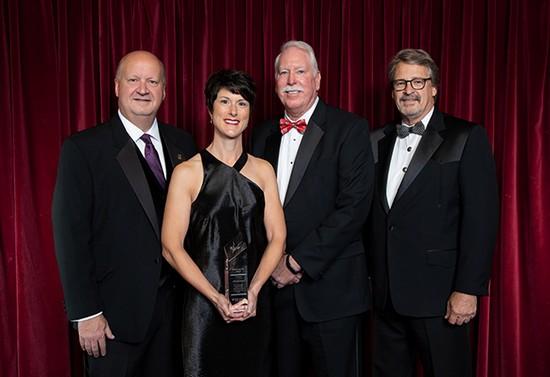 Palatants
Palatants

1+ MIN





11/03/2020
AFB International Receives Saint Louis Fundation Award
AFB International was honored to receive the 2019 Saint Louis Zoo Foundation award. Michelle Sandau, Director of Research and Development, accepted the award on AFB's behalf at the 28th Annual Marlin Perkins Society Celebration. Accompanying Michelle at the event were AFB employees Sarah Anderson, Becca Calvin, Debbie Francis, Jamie Klein, Punya Mohapatra, David Ullrich and Chenglan Yan. AFB appreciates the opportunity to contribute to philanthropic activities in our community. In alignment with these efforts, AFB has maintained a relationship with the Saint Louis Zoo since 2007. Our partnership consists of monetary contributions as well as employee volunteerism. AFB's contributions have sponsored children with special needs to participate in Camp KangaZoo and Camp Joey. In addition, our employees have consistently worked with the Zoo to assist in its animal welfare and conservation education endeavors. One popular employee volunteer opportunity is the Box Turtle Project to raise awareness of conservation in rural and urban areas. We are honored to be recognized and look forward to our continued relationship with the Saint Louis Zoo. by AFB International Source: All Extruded
 Palatants
Palatants

8+ MIN





09/01/2020
Principles of Pet Food Palatabity
People expend a great deal of effort making food taste good. In pursuit of palatability, we sprinkle spices, use flavorful fats, and choose varying preparation methods. Appetizing foods take center stage at parties, holidays, and family gatherings. We applaud superstar chefs, and dedicate television channels, magazines, websites, and countless books to the subject of pleasurable flavors.
Is it any wonder that our pets respond to food flavors, as well? Instead of food on your plate, consider the fare served in our pets' bowls. A celebration of flavor happens every time a pup bounds to his bowl, or a cat responds to the sound of a can opening. Not only do we want pets to enjoy meal time, we want to ensure they're getting proper nutrition to support a vibrant, healthy life. Just as most people probably won't eat a bowl of wheat germ each morning — no matter how healthy it is — a pet can't be forced to eat a healthy but unpalatable meal.
WHAT ARE PALATANTS?
Palatants are ingredient systems that are specially designed to make pet foods, treats, and supplements taste better, ensuring that pets receive the vital nutrients they need. Palatants entice a pet to consume a food, treat, or supplement that, while nutritious, may be inconsistent with their native diet.
Pet food palatants are widely used in many regions of the world. In particular, large markets exist in regions that have high per household pet food consumption, such as the United States, Australia, France, Japan, and Chile. Dry foods make more frequent use of palatants, and use palatants at higher inclusion rates than wet foods. Wet foods tend to naturally be more palatable due to processing techniques and higher moisture content. Adopting palatants in emerging pet food markets are beneficial to both manuacturers' brands and the pet. As consumption of pre-packaged pet food grows, flavor requirements for the food become more important.
Originally, pet food palatants were referred to as 'digests.' Digests are proteins that are enzymatically broken down and applied to dry foods to provide the sensory impact of meat. Palatants have grown significantly more sophisticated since the days of digest. Today, palatants are as varied as the pet food brands that rely on their use.
PALATANT FORMS
Palatants are available as dry powders and liquids, and as systems that use both dry and liquid components. Some palatants are designed to be applied topically, while others function best when mixed into the kibble or can. Typically, palatants are formulated for either dog or cat foods, but sometimes a palatant works well across diets. The interplay between the kibble or chunk that underpins the food and the palatant is important. Certain kinds of pet food work better with specific kinds of palatants. For instance, richer pet food formulations may utilize mild supporting flavors in lieu of a very strong palatant. The quality of the chunk or kibble is important as well. Even a premium palatant may not be able to significantly improve a very poor quality kibble.
PALATANT SOURCES
Palatants can be meat or vegetable based, and may be designed to meet a variety of claims (grain-free, limited ingredient, non-GMO, natural, low fat, etc.). Palatant components include proteins, yeasts, phosphates, antioxidants, antimicrobials, processing agents, and other ingredients. Palatant protein sources vary depending on desired performance targets, cost requirements, and brand claims. The protein can be vegetable or animal derived.
Vegetable derived proteins come from many sources, including corn, soy, potato, and specialty grains. The desired vegetable protein source often depends on customer-specific needs. Common animal derived proteins are poultry, pork, and fish. A protein source that is available in one region — say kangaroo in Australia — may be considered uncommon in other regions of the world.
Just as meat proteins can come from different animals, they can also come from different parts of the animal. Meatbased protein might come from skin and muscle tissue, or it might come from viscera. Viscera is a meat by-product that generally refers to the soft internal organs from the main cavity of a slaughtered mammal.
PALATANT PERFORMANCE AND APPLICATION
Palatant performances range from economy to mid-level to premium; price points are typically commensurate with performance. The upcharge per ton depends on the application rate, which generally ranges from 1% to 3% for liquid palatants, and 0.5% to 2% for dry palatants.
Great results can be achieved by formulating with best-inclass palatants, particularly when the brand capitalizes on the positioning opportunity that comes with the use of a premium palatant
At the pet food manufacturer, palatants are usually applied topically to kibble in liquid or dry form, or a combination. Liquid and dry powder palatants are commonly applied using a drum coater, spinning disk coater, or a vacuum coater. Topical application methods depend on the chosen palatant system and equipment flexibility.
If both liquid and dry palatants are used, the process will often call for topical application of an oil or fat, followed by the liquid palatant, followed by the dry palatant. For a canned product, palatant may be added on top of the food just before the can is sealed, or it may be mixed directly with the paté, gravy or chunk before canning occurs. Not only have palatants become more sophisticated, the science of pets' tastes and preferences have grown too.
MEASURING FLAVOR PREFERENCES
Pets can't voice their opinions about particular flavor preferences, so it's necessary to discover their preferences in other ways. Pets 'vote' on flavor preference through their consumption of food. The gold standard of consumption testing is a paired comparison, also known as the 'twobowl' test.
In this type of test, the animal is allowed to choose between two bowls of food for a pre-defined amount of time. The animal is observed, and numerous measurements are recorded. Common measures include intake ratio, consumption ratio, first choice, preference, and first approach.
Intake Ratio (IR) measures the amount of one ration consumed divided by the total consumption. The mathematical formula is: Ration A Consumed ÷ (Ration A Consumed + Ration B Consumed). For example, if a dog consumes a total of 400 grams of food, and Ration A comprises 240 grams of the total consumption, the IR for Ration A is 0.60.
Consumption Ratio (CR) compares the consumption of one ration in terms of the other ration. The mathematical example of this formula is Ration A Consumed ÷ Ration B Consumed. If a dog panel ate 1500 grams of Ration A and 1000 grams of Ration B, the CR would be 1.5A.
Both IR and CR account for the fact that total intake may vary from day to day depending on external factors, such as weather or the animal's mood. While the total amount consumed from day to day may change, the IR and CR measures remain valid because external factors would be expected to impact consumption of both rations similarly.
First Choice (FC) measures 'draw' to the bowl, or which ration first attracts the pet to eat. It is expressed as a fraction of animals that ate a particular ration first. For instance, if 15 cats on a 20-cat panel ate Ration A first, Ration A would have a FC of 0.75.
Preference provides insight into significant preferences by individual animals in a group of pet taste testers. If part of the panel has an extreme preference for Ration A, and the balance of the panel has an extreme preference for Ration B, the CR might appear as if the rations have parity palatability.
However, taking a deeper look at Preference data will indicate that the data do not have a normal distribution. First Approach is an observational measure that indicates which bowl the pet first approaches, regardless of whether the pet consumed any of the ration. If a dog approaches Ration A in a two-bowl test, sniffs Ration A, then switches to the Ration B bowl and consumes it, Ration A would still win First Approach.
TESTING PROTOCOLS
Different brands and manufacturers rely on different consumption testing measures, depending on the desired outcome. Some brand teams place importance on the pet racing to the bowl. Others place importance on the bowl being emptied completely. It is important to clearly define the preferred outcome with the palatant provider so the proper palatant is selected.
Though the two-bowl test is the industry standard, users of preference testing data should be aware that there are variations between testing protocols. Some variations include the number of pet participants, the environment, the feeding length, the 'normal' diet of pet participants, the breed of the pet participant, and even the region where the test is run. In addition, there are different ways to test and verify the pet participants' tasting talents.
Some common ways of evaluating an animal's ability to discriminate are to run a set of known tests and evaluate their choices. One such test is an Obvious Test: two products with a known large difference (such as unflavored kibble versus flavored kibble) are compared. The winner of this test should be 'obvious' to the pet. Another common test is an A/A Test, where the same product is placed in both bowls.
In this test, the animal should not show preference for either bowl. If they do, something other than flavor discrimination is driving consumption. Finally, an Application Test, in which different application levels of the same palatant are compared, will evaluate a pet's discrimination ability. This test helps the researcher understand which animals can discern slight differences, and which animals prefer higher or lower flavor applications. Regardless of the kind of tests used, it is important to understand the individual animal's feeding behaviors, and to make sure the pet participants are making consistent feeding choices.
In addition to understanding testing variation, it is important that researchers establish the question they want answered before testing begins so tests can be structured appropriately. For example, a test to indicate whether a new flavor performs better than the existing flavor would be structured differently than a test between a new flavor and a benchmark (typically a primary competitor). The former test answers 'how does the new flavor compare to our current flavor?', which may allow for a 'new and improved' type claim. The latter answers 'how does the new flavor compare to my primary competitor?', which may support a selling strategy or defend a brand's positioning.
EQUAL VS. IDENTICAL
It's important to remember that, even if two products demonstrate palatability parity, it does not mean the two products are identical. It simply means the animal has the same preference for both foods. In fact, the foods could be quite different. For example, say you like pizza and burritos equally. Though you like them to the same degree, the meals are quite different in flavor. In the same way, if the intake ratio between a chicken-flavored diet and a fish-flavored diet is 0.5, it means the pet liked both diets equally, but not that the diets are the same.
Much goes in to ensuring that the fare formulated for pets actually gets eaten by the cats and dogs for which it is created. While applause and rave reviews are not the typical pet responses, wagging tails and insistent mealtime meows are. Palatants make happy mealtimes possible, and help ensure that our beloved cats and dogs get the nutrition they need to be healthy, lifelong companions.
by AFB Imternational
Source: All Extruded
 Palatants
Palatants

5+ MIN





07/11/2019
Fat Quality: Impact of Fats on Palatability
Pet food palatability is the result of what we at AFB International call 'the triangle of palatability success ingredients, palatants and processing. Fats can provide important functions on all three sides of the triangle. As research and development director at AFB's European headquarters in Oss, The Netherlands, it my job to understand the science behind palatability and to share technical insights for delivering palatability performance with customers and colleagues. FATS IN INGREDIENTS Fats may be naturally present in ingredients chosen for a pet food formulation. These fats can serve as a source of important Omega-6 and Omega-3 fatty acids, boosting nutritional value, as well as flavor for pets. Pet foods that include Omega-6 and Omega-3 fatty acids in ratios between 10-to-1 and 5-to-1 have been shown to have health benefits, including reduced risk of heart disease, joint problems and other issues related to inflammation. FATS AS PALATANTS Fats can be applied topically or internally to pet food.The most common topically applied fats are animal fats. Chicken fat provides high palatability but also greasiness, while pork offers a less-greasy but less palatable alternative. Both chicken and pork fat have a low melting point, keeping them liquid at lower temperatures. Beef fat is used less often because of the need for a beef-free claim in many countries and because of its high melting point, causing it to become hard at temperatures from 20 to 25 degrees Celsius. For total fat application, up to 8% may be used in a dry pet food formulation with a single-screw extruder. Fish and flaxseed oils are some examples of the most common fats used as internal sources. Fats generally aren't used internally at high application levels because of their negative effect on the expansion rate, which correlates to increased specific weight of the kibble. FATS IN PROCESSING Choosing a high-quality fat and processing it to maintain its quality is critical. Adding antioxidants immediately during the rendering process and maintaining a proper storage temperature before and after application are keys to success. How fats are applied in pet food production is important, too. As noted, fat may be applied topically or internally, though topical application is used about 80% of the time. The most common processes for adding topical fats are drum coating, vacuum coating and spinning disk coating. A fat often is combined with liquid or dry palatants— or both. When used in combination, the fat is applied first, then the liquid palatant, then the dry palatant. This order helps ensure the dry palatant will adhere better, as well as keeps the fat from masking the effect of the dry and liquid palatants. ENSURING FAT QUALITY Pet food scientists know fat is an important ingredient in pet food. However, not all fats are quality fats and even high-quality fats need to be treated to ensure they maintain that quality. That's why it's crucial for all disciplines within pet food producers—from purchasing and sales to marketing and general management—to understand how the investment in good fat quality contributes to pet food palatability and, ultimately, the bottom line. Fresh fat will positively influence the total flavour of pet food, while rancid or oxidized fat can generate unpleasant off-notes that may impact a pet's interest in the food. Generally, any level of rancidity negatively impacts cat palatability, while dogs can tolerate moderate levels. If the pet won't eat the food, the pet parent is unlikely to purchase it again. RANCIDITY AND OXIDATION Rancidity is the result of oxidation. This is a chemical reaction in which the double bond of the lipid molecule reacts with oxygen to produce a variety of chemical products. The oxidation process can be influenced by moisture, temperature, light, trace metals, oxygen, and enzymes. METHODS OF VERIFYING STABILITY The presence of free fatty acids (FFA) indicates poor quality (freshness) of the raw material. FFAs are sensitive to oxidation. A high level of FFAs in animal fat can be a cause for concern with respect to rancidity. The colour may also provide an indication of the fat quality as impacted by the intensity of the process. High temperature and pressure create a darker colour, which typically has a negative impact on palatability. Peroxide value and hexanal are indicators of rancidity. Peroxide value is the primary and hexanal is the secondary oxidation product. Both of these in combination provide a true indication of rancidity. In the pet food industry, in general, levels below 3 indicate that the products are good or stable; levels 3 to 5 indicate products are going bad; and levels above 5 indicate that the products are bad and show off-flavours. Accelerated test methods to measure the stability of fat include OSI (Oxidation Stability Index), AOM (Active Oxygen Method), and oxygen bomb. HOW TO PREVENT OXIDATION So how does a pet food company prevent oxidation and verify that prevention is working to help deliver the desired palatability? Here are some important tips: Know your fat supplier. Governments do not regulate fat oxidation levels, so it's up to you to ensure quality. Procure consistently good quality fats from a reputable source with whom you have an ongoing relationship. Choose fats low in FFAs. FFAs indicate a lack of freshness. If used as ingredients in foods, those foods can become rancid in a short time. Have antioxidants added to fats at the supplier before delivery for maximum effect. Once fats begin oxidizing, it's difficult to arrest the process—so stop it before it starts. Antioxidants interfere with oxidation reactions in one of the following ways: Chain-breaking antioxidants intercept free radicals involved in the oxidation process. Oxygen scavengers react directly with oxygen and remove it from the system. Chelating agents or sequesters are effective inhibitors of oxidation by chelating metal ions that may catalyse oxidation. Protect fats through the production process by adopting pet food packaging processes that replace oxygen with inert gas or use adequate antioxidants. Monitor fats of raw materials and pet food products through the production process at a regular frequency by measuring both peroxide value and hexanal. Don't be fooled by a peroxide value that climbs early in oxidation, then falls again as the secondary oxidation process takes over. Measure hexanal as well, which shows a linear increase across time, for a true and complete picture of rancidity, see Figure 1. Figure 1: For a true and complete picture of oxidation and potential rancidity,measure both peroxide value and hexanal. CONSISTENT PALATABILITY Monitoring fat quality, measuring oxidation, implementing best-in-class manufacturing processes and appropriately applying antioxidants (time and level) are crucial aspects to achieve consistent palatability for dogs and cats. by Han Laumen - AFB International All Extruded
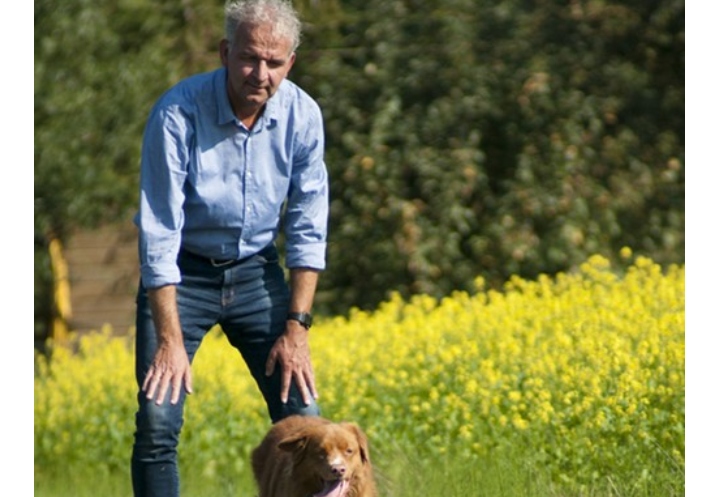 Palatants
Palatants

3+ MIN





29/07/2019
Promoting Health habits to address Pet Obesity
According to the American Veterinary Medical Association (AVMA), more than half of U.S. pets are considered overweight or obese, and the number affected is expected to continue to rise. Weight concerns in pets are a significant issue for veterinarians, pet owners and society as a whole.
Obesity is a big risk factor for many diseases and disorders in pets, including diabetes, cancer, kidney, liver, inflammatory bowel, respiratory compromise and others – impacting their quality of life and life expectancy.
As a veterinarian for more than 30 years, pet obesity and related behavioral disorders and diseases are now the top patient concerns addressed in my practice. Despite its prevalence, I am often met with surprised reactions from pet owners when they are told their pet is obese or overweight. While there are many factors contributing to the issue, one of the most important is the lack of education on the ideal weight and lifestyle needs of different pet breeds.
The pet food industry has long been a leading advocate for pets and their health, and I believe it can also play a significant role in tackling the pet obesity epidemic. The industry, along with pet retailers, veterinarians, and pet associations, can continue to help educate pet owners on the key tools for a healthy and active lifestyle for their animals, helping reduce pet obesity. Specifically, pet food companies can continue to help pet owners translate what's healthy for their pets in a few key ways:
Encouraging active lifestyles and exercise for pets
As U.S. lifestyles have changed, people today are less active and more sedentary, which has impacted the amount of exercise pets receive. The result: most pets don't get enough exercise. For example, dogs need, on average, approximately 30 – 45 minutes of activity twice a day. Depending on the breed of dog, they may need even more. Promoting the role exercise plays in a healthy lifestyle for pets is key.
Creating consistencies in feeding recommendations
Pet food companies work hard to ensure their nutrition labels not only meet regulations, but also provide helpful information to consumers. As the industry continues to grow and new brands enter the market, pet food companies have the opportunity to present pet food portion and feeding guidance in consistent, easy-to-interpret terms related to pets' ideal weight – This can help minimize pet owner confusion and misinterpretation on how much to feed their pet.
Promoting Healthy Portion Control in Overweight Pets
When pets need to slim down, it's important for pet owners to consult their veterinarian for proper instructions on how to slowly decrease the amount of food their pet receives until achieving the amount of food required to meet their nutritional needs. Animals that have their food cut back too quickly can be prone to behavioral problems, and are likely to go looking for food in other places, like the kitchen counter.
Encouraging regular veterinary care
Too frequently pets come to our office after there is a serious weight-related issue, which often could have been prevented. The highest expression of love pet owners can provide their pets is a commitment to their health and wellness. Routine veterinary care is essential.
by Dr. Amy Wolff
Email: [email protected].
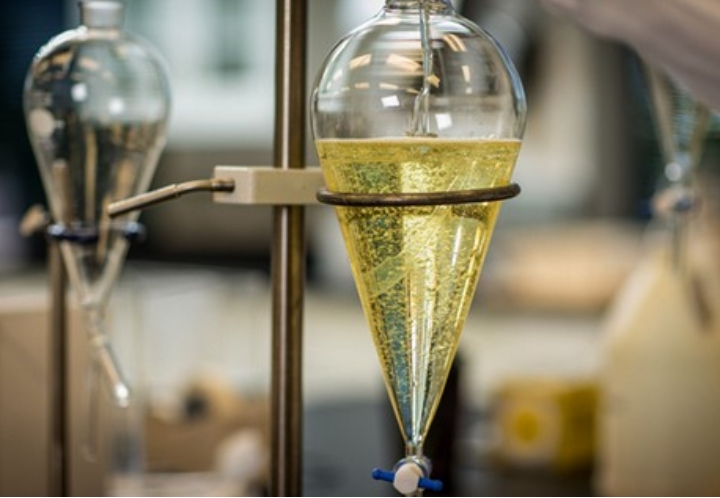 Palatants
Palatants

3+ MIN





07/06/2019
Fat Type and Amount: It’s Impact on Palatability
Research reveals preference differences in Dogs and Cats for Kibble Fat Sources and Concentrations Overview: Fat plays an important role in dog and cat food, providing nutritional, functional and palatability benefits. The type and amount of fat used varies by the diet, the finished product specifications and the manufacturer. There has been limited research evaluating the correlation between palatability and topical fat sources and their applied amounts, leaving many pet food manufacturers questioning the potential impact various combinations may have on dog and cat preference. To evaluate, AFB International conducted research at the company's Palatability Assessment Resource Center (PARC) facility on the effect both external fat sources and levels have on palatability preference in dogs and cats. The research found differences in fat sources and levels preferred by dogs and cats, demonstrating that diets can be tailored based on animal preferences. These insights help pet food manufacturers determine potential fat source and concentration adjustments to increase palatability of their dog and cat food brands. Experimental Design and Trial Protocol: The study design consisted of 5 sources of fat (canola oil, chicken fat, beef tallow, bacon fat, and herring oil) applied topically at two levels (3% and 9%). The different sources of fat represented a variety of flavors and aromas, while the two application levels simulated the low and high levels applied in a topical coating. To control variability, the same kibble, equipment, measurements and palatants were used on both rations in each species. All combinations were topically coated on an economy grain-based dog and cat kibble along with a non-meat palatant. The fat and palatant were applied sequentially on the kibble. Each fat source and application level combination was tested versus each other in a round robin process and the data analyzed in a Bradley-Terry model. This took the data from each pairing and formed a ranking of the fats from most preferred to least. Feeding trials were conducted with mixed breed animal panels at PARC. Paired preference feeding trials were conducted with two exposures (20 animal x 2 days) and bowl placement was alternated each day. Data was collected on grams consumed and the firstchoice bowl for both animal species. Results: Dogs and cats have different preferences when it comes to the source and concentration of fat source. Dog and Cat Panel Trial Results: Fat source and applied percentage in order of preference For dogs, the results showed a greater overall response to higher fat concentrations / percentage levels (9% vs. 3%). The results also demonstrated a preference for fat sources with more flavor and aroma. Additionally, there was a significant difference in palatability between the two highest-ranked variables compared to all others. Cat trial results were very different compared to the dog trial results. For cats, there was less preference differentiation between the top ranked fat sources and concentrations vs. the bottom ranked, which statistically did not provide a stand-alone favorite as in the dog trials. Cats, overall, preferred the lower fat concentration level (3%). Fat sources with more flavor, such as bacon, also ranked well. Conclusions: The research showed differences in kibble fat sources and concentration preferences in dogs and cats. For dogs, a nine percent fat concentration on a kibble will be generally preferred over the lower application of three percent. Bacon and beef tallow fat sources were the most preferred by dogs in the trials. For cats, a three percent fat concentration will generally perform better than the nine percent for majority of the fat sources. RESEARCH AND DEVELOPMENT, AFB INTERNATIONAL
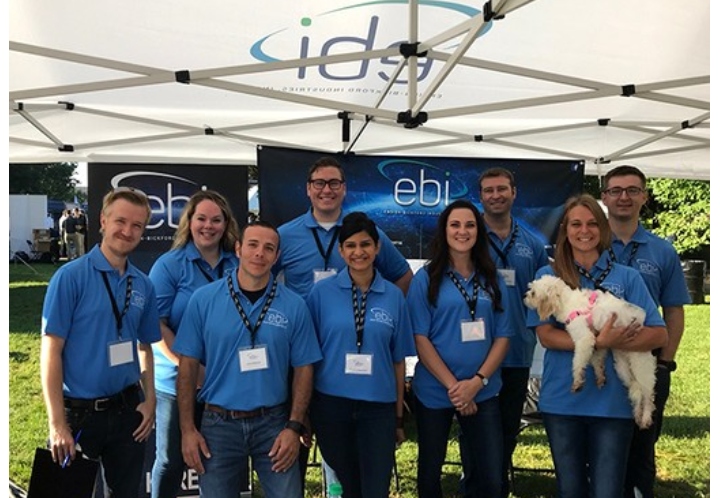 Palatants
Palatants

2+ MIN





02/05/2019
Developing Tomorrow’s Workforce – University Relation and Recruiting Program
Attracting and developing top talent is a priority at AFB International. As the pet food industry continues to grow and advance, our workforce needs are expanding and evolving too, requiring new knowledge, techniques and leading talent to help meet our clients' needs and industry challenges. In collaboration with our parent company, Ensign-Bickford Industries (EBI), AFB actively participates in EBI's University Relations and Recruiting program, designed to recruit and hire top student talent, to build a pipeline for tomorrow's workforce. Our program takes a team-based approach to promote all EBI companies and the intern and employment opportunities available to students. We collaborate with five key universities: Purdue University, Worcester Polytechnic Institute, Clarkson University, University of Connecticut and University of Southern California. All were selected based on their academic excellence, curriculum, programs and diverse student populations in the STEM field. For students, AFB internships provide a unique opportunity to be a key team member on large, cross-functional teams tackling complex projects that have a direct impact on our business. They have opportunities to work and learn from senior company employees, as well as participate in professional development activities. AFB's collaborative and team-focused culture creates a structure that delivers a positive and rewarding experience for each student. In 2019 you will find EBI companies participating at partner university career fairs. We will also continue to support students' education and career development through campus lectures, industry roundtables, mock interviews and resume reviews, or student days at AFB's headquarters in St. Charles, Missouri. Special thanks to AFB's senior leadership team for their active involvement and continued support of the University Relations and Recruiting program. We also want to recognize all AFB and EBI employees whose dedication and passion for this initiative is guiding both the students' aspirations and future of AFB. For more information on AFB's University Relations and Recruiting program, contact Preetha Banerjee ([email protected]) or Joseph McVey ([email protected]) by Preetha Banerjee & Joseph McVey - AFB International Source: All Extruded
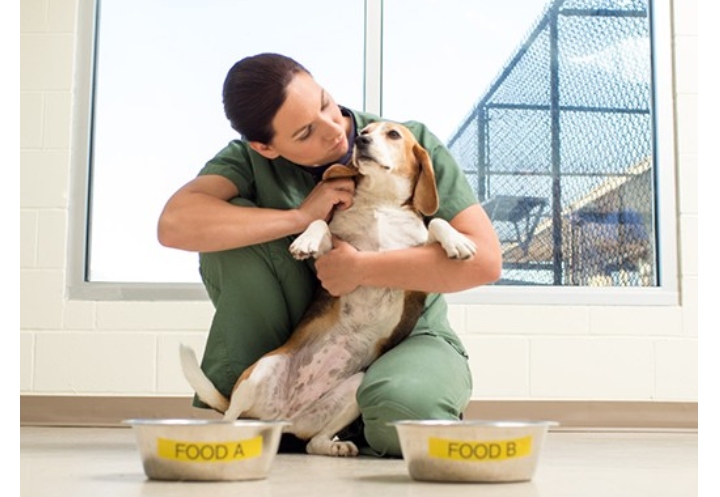 Palatants
Palatants

2+ MIN





23/03/2019
Animal Technicians Find Passion and Purpose at AFB’ s Parc
We were excited for the opportunity when we were hired as animal technicians at AFB International. We understood that our love for pets, past experience and education would allow us to play an important role in the development of pet food palatants. What we didn't anticipate is everything we'd gain from the job – a rewarding career and much more. As animal care and health technicians, we have the pleasure of caring for the animals that reside at the company's Palatability Assessment Resource Center (PARC). This facility is where we study palatability and behavior with cats and dogs. PARC provides a loving and playful environment that creates special bonds between its resident animals and the technicians that look after them. Those relationships are just one of the reasons we feel so passionate about our jobs. Being able to love and care for these animals is a great feeling. While spending time with the animals is incredibly rewarding, working as an animal care or animal health technician is also a great responsibility. PARC is home to more than 200 dogs and cats of varying sizes and breeds, and features more than 25,000 square feet of pet-focused indoor and outdoor areas. Animal care technicians are charged not only with watching over and feeding resident animals, but continuously cleaning up after them to help ensure the facility maintains the highest standards to support their health and well-being. Animal health technicians play a critical role too, and contribute to the Center's animal health program. In addition to completing daily tasks, animal health technicians assist PARC veterinarians in providing care for any sick resident animals, maintaining records, and enhancing the Center's health services. Another rewarding aspect of our jobs is the role we play in supporting our customers. The purpose of PARC is to help our customers better understand companion animal food preferences through palatability testing and behavior studies. We enjoy when customers visit PARC, and we get to witness their enthusiasm and excitement for the Center. It reflects our feelings and passion about our work, and is affirmation of the importance of the work we are doing to help our customers develop nutritious food pets want to eat Working at PARC has not only helped us find rewarding careers, but also discover a greater life purpose of supporting and advancing the quality of life for the cats and dogs that make their homes here. For more information on AFB's PARC resource center or career opportunities as an animal care or animal health technician, contact Stacey Schlanker at [email protected]. by: Erica Nichols & Amanda Huenefeld – AFB International All Extruded
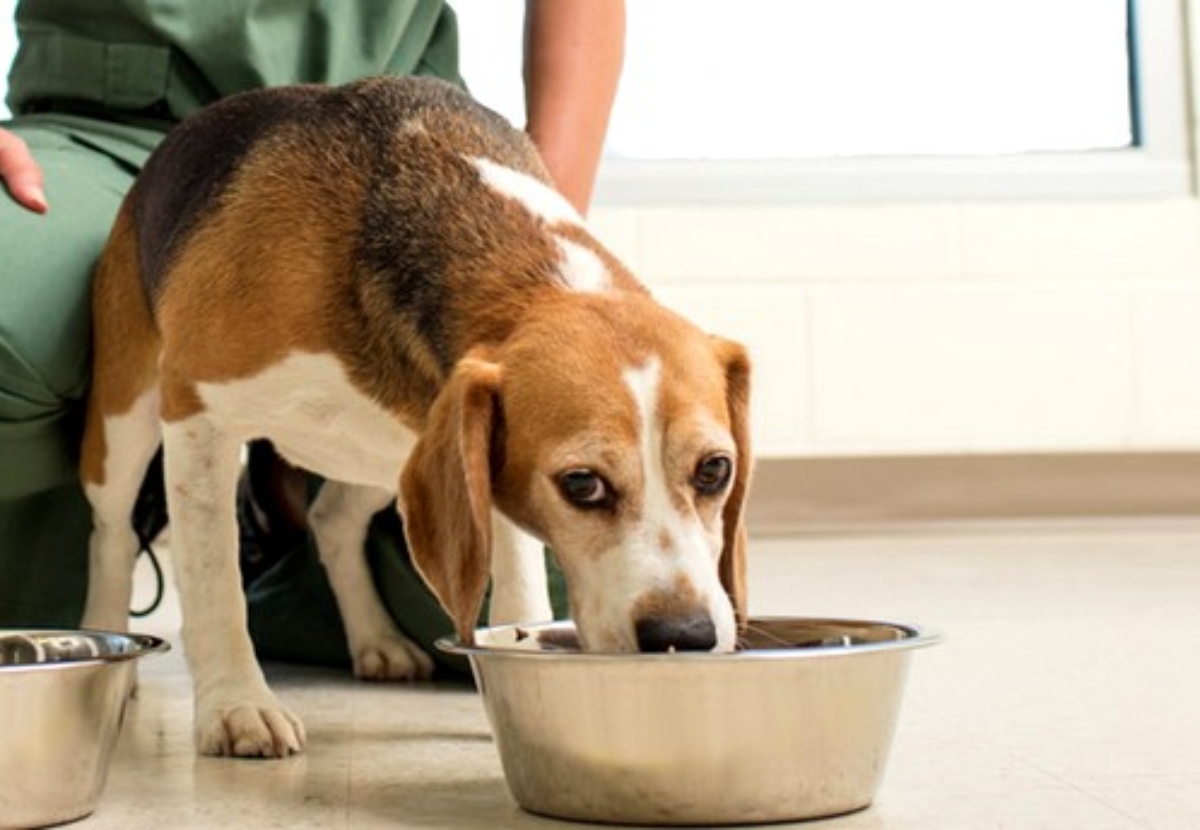 Micro Ingredients
Micro Ingredients

2+ MIN





26/12/2018
Ensuring FASMA Compliance for Pet Food
When the Food Safety Modernization Act (FSMA) was signed into law, it marked the first major reform in food safety regulation in over 70 years. The goal of FSMA is shifting the focus from reacting to contamination of the food supply after it has occurred to preventing it from occurring. As of September 17th, 2018, animal food facilities (except for those qualifying as very small businesses) are now required to comply with both Subparts B and C of the Preventive Controls for Animal Food. Subpart B consists of the Current Good Manufacturing Practices (CGMPs). Subpart C demands compliance with the preventive controls requirements including establishment of a food safety system with a hazard analysis and risk-based preventive controls as needed. For AFB International, food safety and quality have always been our top priorities. Our Hazard Analysis and Critical Control Points (HACCP) program has been part of our food safety program for many years, helping us to identify and mitigate food safety risks. Additionally, AFB"s sampling plan, positive release program and frequent internal compliance audits help to ensure we are meeting strict food safety standards in all of our manufacturing facilities and providing high-quality and safe products to our customers. With FSMA, AFB has taken an even deeper look into our food safety and quality programs to re-evaluate any potential food safety risks and provide our customers with the highest quality assurance possible. This assessment has resulted in enhancements to our HACCP Food Safety Plan, as well as our extensive supplier approval program, which helps to ensure our raw materials and ingredients come from sources that meet both AFB"s strict standards and FSMA requirements. As we are approving suppliers, one of the things AFB likes to see our suppliers have is a third-party certification. Third-party certifications, especially those certified under the Global Food Safety Initiative (GFSI) umbrella, are becoming increasingly important for our suppliers to hold, as they provide an added level of security that the supplier has the appropriate food safety and quality programs in place. AFB"s third-party certifications also demonstrate to our customers our commitment to, and compliance with, pet food regulations and standards. As pet food continues to parallel trends in human foods - such as non-GMO, all natural and gluten-free, we anticipate an increase in pet food safety regulations. In the meantime, AFB"s Quality Assurance team is dedicated to continually evaluating our programs and processes to help our customers ensure quality and food safety for pets and pet owners. To learn more about AFB International"s Quality Assurance team or FSMA requirements for pet food, contact Robyn Allyn at [email protected]. Author: Robyn Allyn – AFB International Source - AFB International










